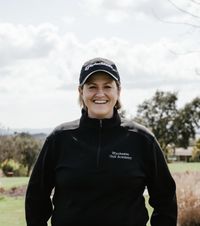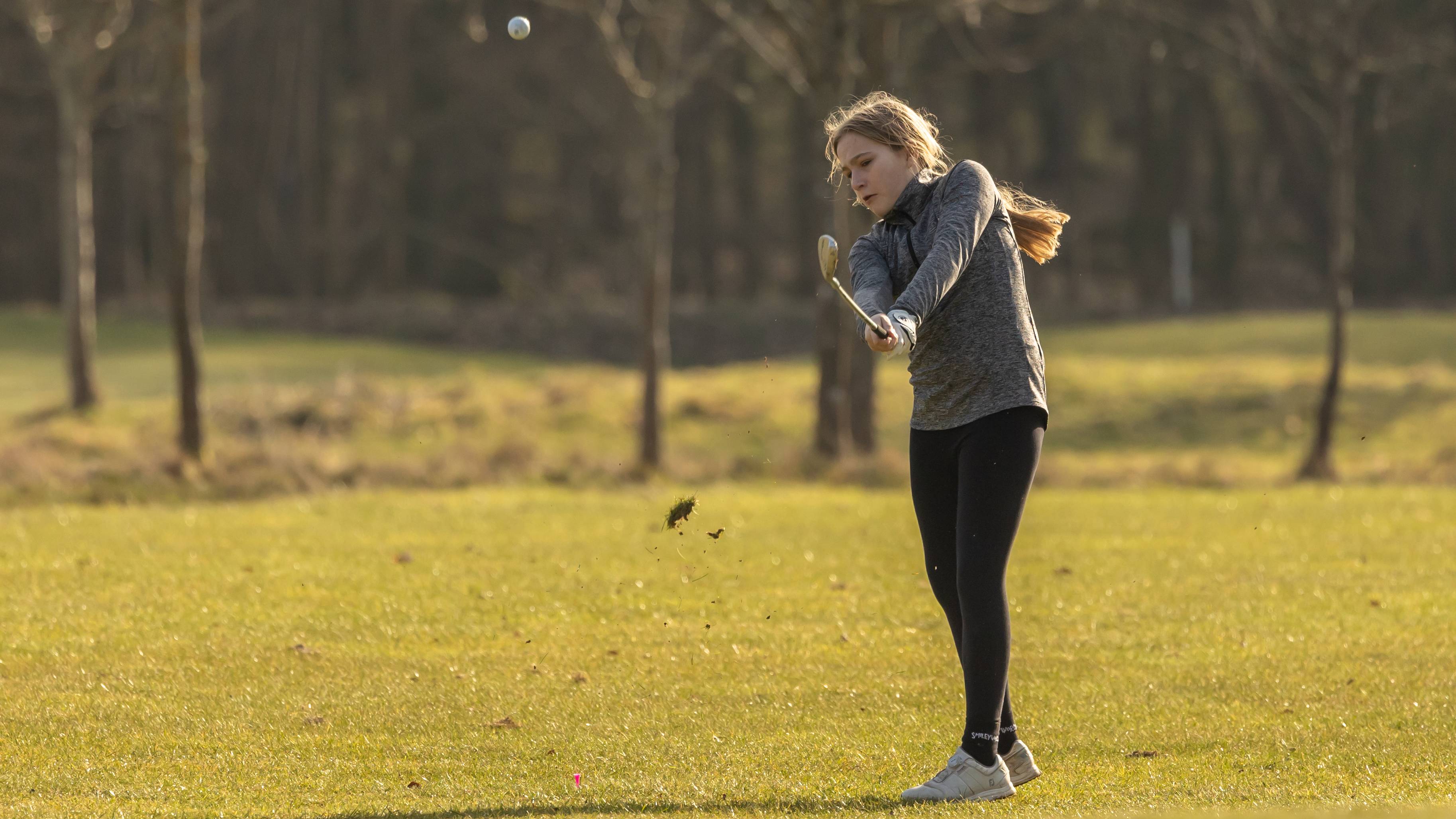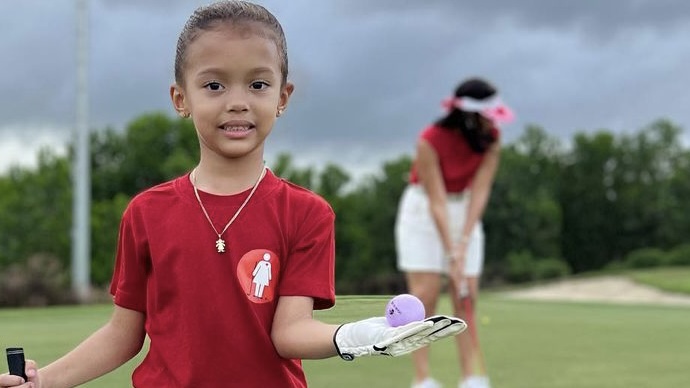7 Ways Golf Clubs Can (And Should) Be More Welcoming To Juniors
Here's PGA Professional Emma Booth's advice for golf clubs on the best ways to make junior golfers feel more welcome


I echo the sentiments of Golf Monthly’s Big Junior Golf Survey by agreeing that in the UK we are not that child friendly in comparison to many of our European counterparts.
I know I have regularly felt the disapproving looks and loud tuts of others when I’ve taken my children out and about, especially when shopping or in restaurants. To warrant these reactions they will have committed the terrible crime of behaving like children in public, which is often loud and a bit messy, but they are children and have a right to take up public space. Mini adults they are not.
One thing everyone can agree on is enjoying seeing children engage in sport, but what about when that sport involves being in a shared space with adults? As participation across all demographics continues to increase, junior golf is on the up with more children than ever taking up the game and taking up space on the fairways. Yet not all golf clubs seem to be moving with the changing times, or rather don’t want to, which is an unwise strategy given they are the literal future of the game.
To fully capitalise on the next generation of golfers, golf clubs should be doing all they can to provide a welcoming environment and here are some ways I think they can do just that…
Junior Membership Offers
In case you hadn’t noticed, life is expensive now and golf may be just one of the many activities children partake in. I want my girls to try as many sports and different activities as possible to expand their horizons and opportunities in life.
Although big strides have been made in making golf more accessible, golf for many still has the perception as being difficult to get started unless you know someone who already plays, as our recent junior survey revealed, with 41 out of the 45 juniors surveyed having parents or a parent who plays golf.
Making junior memberships affordable, if not free, is a great way to attract more children to the sport. Clubs with a growth mindset embrace the opportunity of potentially attracting other family members to the game and the club, as well as securing potential future adult members. The club will also benefit by raising its visibility in the local area as a sporting venue that is encouraging young people to be active and participate in sport in the community.
Subscribe to the Golf Monthly newsletter to stay up to date with all the latest tour news, equipment news, reviews, head-to-heads and buyer’s guides from our team of experienced experts.

Short Course Format
A short course format is where the yardage of the course is reduced by placing the tees closer to the hole and in an easier position to play from and often a fewer number of holes to be played will be incorporated with this format.
Regardless of how many juniors a club has, all clubs should incorporate a short course format. Not only is it great fun, it’s a very simple way to diversify the course and offer options for members who would also like the opportunity to play a shorter and less challenging format. It’s good to change things up and is fun to take on holes you know so well from different positions, using different clubs.
Most importantly, it offers a pathway of progression for juniors to follow, who once confident enough will progress to playing from the longer tees. Golf is an incredibly difficult sport which can put people off and most sports offer an easier child-friendly version of their sport so why shouldn’t golf?
Buddy System
When I joined my first golf club at the tender age of 12, I was regularly taken around the course by a member who volunteered to help with the juniors. She was an elderly, 5ft tall Scottish lady who absolutely made sure I not only got my ball in the hole with every shot correctly counted, quite right too, but that I learnt the proper etiquette of the game. I can’t say it was always a barrel of laughs, but I came through the other side better for it and understanding how to hold my own on the course. I will always feel grateful to the lovely Mrs Muir.
The buddy system worked because it provided me with a mentor who appreciated that I was learning and didn’t know anything about how to play and behave on a golf course. So much of golf is learning how to properly conduct yourself and be a good playing partner to others.
Having adult members show support for juniors is a great way to foster a supportive and encouraging environment to help juniors flourish as well as creating a wonderful sense of community and shared enjoyment between the generations.

Relaxed Dress Code
Ah the biggie! No other sport seems to spend as much time debating dress code. For the most part, golf is being dragged into the 21st century with more and more clubs adopting a more relaxed approach to on-course and in the clubhouse attire, a good thing too!
Compared to other sports and activities, golf requires quite a lot of kit to get started. Even with a reduced membership, you are still looking at quite a large outlay and that can put a lot of parents off who know all too well how kids can change their mind about sports or activities once the cheque has cleared for the new shiny equipment or uniform.
Any way to reduce the cost of getting started and making it easier can only be a good thing. Most modern tracksuits and running shoes do not look that out of place on a golf course and are suitable to swing and play in.
A compromise to uphold some traditional standards could be to require a collared polo shirt and golf shoes once juniors start to play in official competitions for a handicap, by which point they will likely be more than ready to look the part and like the pros on TV.
Welcoming Clubhouse
Many clubs still struggle with this and a friendly clubhouse will depend highly on the club culture and their policies. Golf clubs who want to embrace the next generation will ensure juniors feel welcome and part of club life through the atmosphere in the restaurant, locker rooms and pro shop.
Clubs that recognise the benefits of encouraging a growing junior section often go a step further by providing designated spaces for juniors to be together and socialise, resulting in juniors feeling a sense of truly being part of the club, and most importantly that they belong.

Family Days
The leisure gap between men and women is slowly closing. Previously men’s hobbies and leisure time would have taken priority over family life at the weekend. Two household incomes, along with family life being more of a priority for many, mean that activities the whole family can enjoy together are those that are in demand, hence the huge rise in driving range and adventure golf participation.
Clubs that create a welcoming atmosphere to the whole family including babies and toddlers will reap the rewards when it comes to converting car park golfers to those who stay and spend in the clubhouse and the pro shop. If part of the household income is spent each year on a facility that doesn’t make everyone feel welcome, people will be far more likely to resist or question that spend.
A family day aimed at bringing the whole family along to have a go at golf and something to eat is a great way to engage with the next generation of golfers and again, offer them a sense of everyone being welcome.
Junior Coaching Programmes
As a coach this is one of the ultimate ways to make children feel welcome at any club. By learning the fundamentals with a coach, children are likely to progress more quickly into confident young players and a good coach will provide guidance on how they can transition to full members.
Initially, having the opportunity to attend junior coaching without the commitment of a membership is a fantastic way of increasing the reach and visibility of a golf club and will ultimately lead to growth.
Time and time again I’ve seen lasting friendships through junior coaching sessions as the children grow up and progress together, and who knows, maybe the next club champion or beyond could be in that group. I know I always love to see pictures of tour players when they competed against each other as juniors growing up. Junior programs and sessions are a wonderful way to promote a club’s dedication to fostering talent and their investment in the next generation of golfers.
A golf club not actively trying to develop a flourishing junior section is like a fish tank that never freshens the water, it ends up stale and grim to look at, let alone swim in. Yes, children can be messy, noisy and won’t always be able to manage their emotions, but I can think of many adults that struggle with that too.
Lastly, there are many things adults can learn from watching juniors start and progress with golf, such as their lack of inhibitions, worry of what can go wrong, and their sheer joy of hitting good shots is always a wonder to behold.
Emma has worked in the golf industry for more than 20 years. After a successful amateur career, she decided to pursue her true golfing passion of coaching and became a qualified PGA Professional in 2009. In 2015, alongside her husband Gary, who is also a PGA Professional, they set up and now run Winchester Golf Academy, a bespoke 24 bay practice facility offering not only all the latest technology but a highly regarded bistro. Emma is happy coaching all golfing abilities but particularly enjoys getting people into the game and developing programs to help women and juniors start and improve. Her 2022 Get into Golf program saw more than 60 women take up the game.
Emma is a member of TaylorMade’s Women’s Advisory Board, which works to shape the product offering and marketing strategy with the goal of making it the number one brand in golf for women. When not changing lives one swing tweak at a time Emma can be found enjoying life raising her three daughters and when time allows in the gym.
